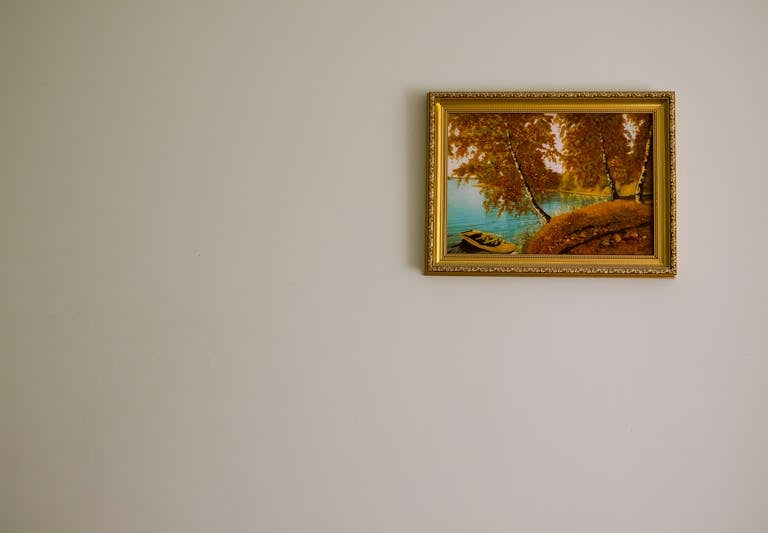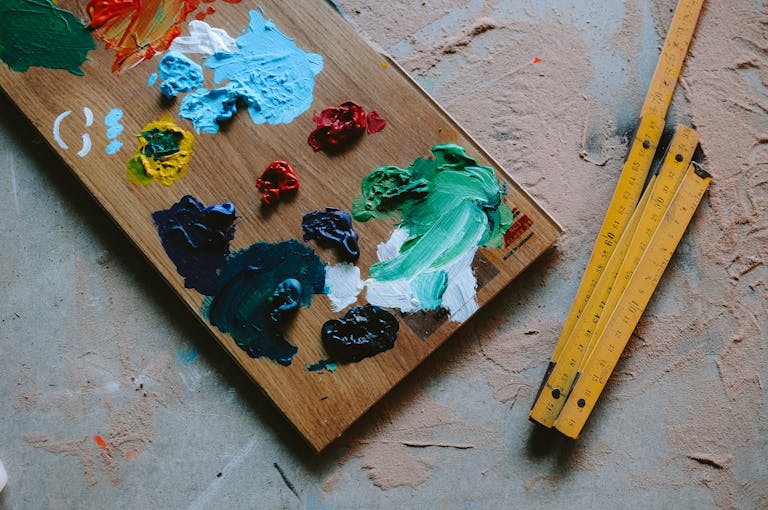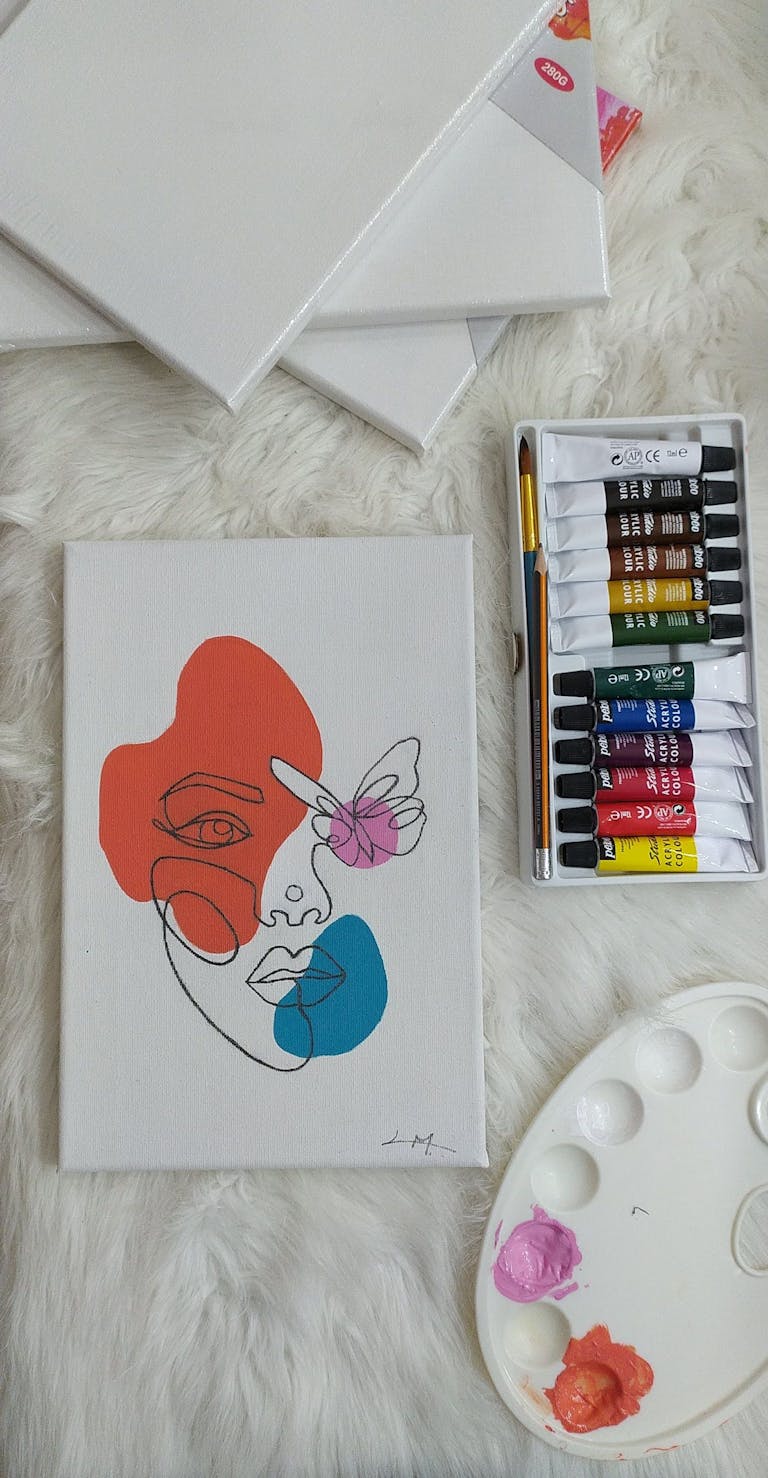Artist-Grade vs Student-Grade Acrylic Brands: What’s Worth Your Money
Have you ever wondered why some acrylic paints cost so much more than others? I sure did! After trying lots of different brands, I’ve learned some surprising things.
The biggest difference? Pigment. Artist-grade paints have 3-4 times more color pigment than student paints. That’s like the difference between watery juice and thick smoothies!
When I first started painting, I used cheap paints that looked dull and faded quickly. A friend let me try her expensive paints, which were vibrant and mixed beautifully without turning muddy.
Here’s what I’ve learned about the two types:
Student-Grade Paint
These are the less expensive paints. They use fewer pigments and more fillers (like how cheap ice cream has more air whipped into it). The colors aren’t as bright, and they might fade faster. But they’re great when you’re learning or covering large areas.
Artist-Grade Paint
These cost more because they’re packed with pigment. The colors are brighter, last longer without fading, and a little goes a long way. When you mix them, you get cleaner colors.
What about the cost? Well, artist paints might be three times more expensive but have four times more pigment. You actually get more for your money in the long run!
My advice? Start with a few artist-grade paints in the colors you use most. Then, fill in the student’s grade for the rest. As you get better, you can slowly replace them.
Remember, the right paint won’t make you a better artist overnight, but it can make your artwork look better and last longer. And that’s worth spending a little extra on!
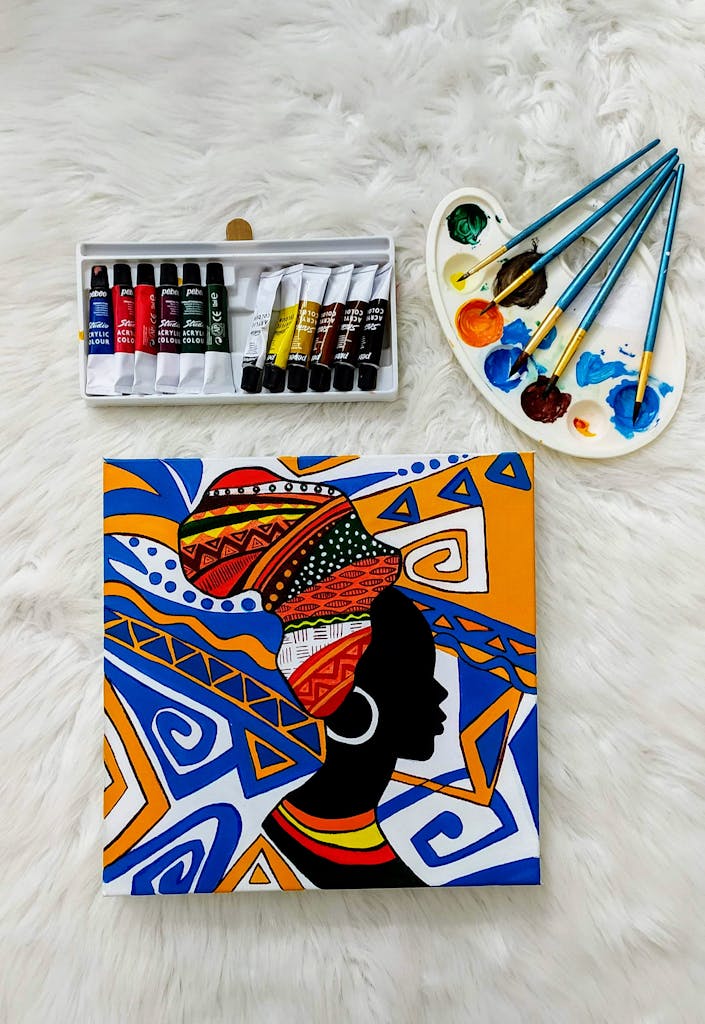
The Fundamental Differences Between Artist-Grade and Student-Grade Acrylics
I still laugh when I think about my early painting days. I thought all the paint was the same! Boy, was I wrong?
Let me tell you what I found out. Imagine two glasses of orange juice. One is fresh-squeezed and full of flavor. The other is watered down with lots of ice. That’s the difference between artist-grade and student-grade paints.
The fancy paints have way more color – up to 75% more! When I finally tried the good stuff, I couldn’t believe my eyes. The colors were so bright and rich, like turning up the volume on a song.
Here’s a funny story: I once made a painting for my mom using cheap paints. A year later, the bright purple flowers had turned a sad grayish color. The sun had faded them! That’s when I learned about “lightfastness” – how well paint stands up to light over time. The suitable paints won’t disappear so quickly.
Another big difference? How they feel when you use them. The artist’s paints feel smooth and creamy, like spreading soft butter. Student paints can be everywhere – some are runny like milk, others thick and lumpy. It’s so frustrating when you’re trying to make something beautiful!
Now, I’m not saying you need the expensive stuff for everything.
I still use student paints when I’m just playing around or trying new ideas. But for exceptional paintings, do I want to keep them forever? I go for the good stuff.
Think of it like cooking. If you’re making a quick sandwich for lunch, plain bread works fine. But for a special dinner party? You’d pick up that fancy artisan loaf.
Your paintings deserve the best materials you can give them. After all, you’re putting your heart into making them!
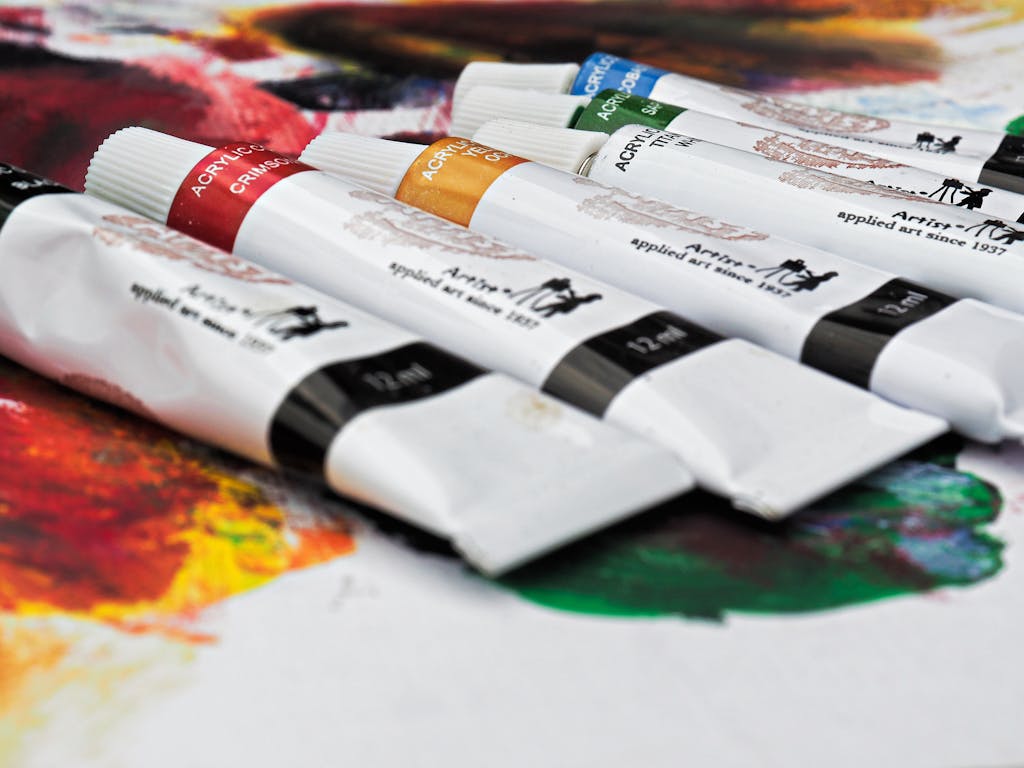
Top Artist-Grade Acrylic Brands
After years of trying every paint I could get my hands on, I want to share which artist-grade acrylics are really worth your money in 2024.
Golden Heavy Body Acrylics are my top pick. The colors are so rich – like the difference between watered-down juice and fresh-squeezed! The paint feels smooth like butter when you spread it. You can pile it on thick or thin it down for see-through layers. Yes, they cost more, but a little goes a long way. I’ve had tubes last for months, even when I paint daily.
Liquitex Professional comes in different thicknesses, which is super handy. They have thick paint, medium paint, and even ink! My favorite is their soft body paint – it flows nicely but doesn’t run all over. And talk about colors! They have over 100! It’s like walking into an ice cream shop with endless flavors.
Winsor & Newton is an old, trusted brand many artists love. Their paint spreads very smoothly with no streaks. Just know that some colors might fade if they sit in the sun for years. They’ve changed their recipe over time.
For something different, try Sennelier from France. They put real honey in their paint! This makes it a bit shiny and helps colors mix better. They also make super bright neon colors that pop off the canvas. These bright colors might fade faster, but they look fabulous for paintings that stay indoors.
My advice? You don’t have to pick just one brand. I use Golden, Liquitex, and Sennelier, which are all mixed together. It’s like having different tools for different jobs.
The best way to find your favorite is to try a few brands yourself. Painting should make you happy, and finding paints you love improves the whole experience. Your perfect paint is out there waiting for you!

Best Student-Grade Acrylic Brands Worth Considering
Tell me about some great student paints that won’t empty your wallet! I’ve tried them all and found some real winners.
Liquitex Basics feels like the younger sibling of the fancy Liquitex paints. They spread smoothly and mix together well, making them perfect when starting out. The colors look bright and fresh, too.
Just know they don’t have as much pigment as expensive paints. This means you need to use more paint to cover your canvas. Some colors might fade over time if they sit in sunlight. But for the price? They’re a great way to start painting without spending too much.
Amsterdam Standard Series is a European brand that’s becoming more popular. These paints are surprisingly good for what they cost! The colors are rich, and they feel buttery when you use them. They have some unique colors you don’t usually find in cheaper paints.
One funny thing about Amsterdam paints is that some colors are thicker than others. Some milkshakes are denser than others at the same ice cream shop. You get used to it quickly.
Blick Studio Acrylics are made by an art store (Blick), but don’t let that fool you. These store-brand paints are excellent! The colors are bright, and they mix together nicely. They don’t offer as many color choices as other brands, but the ones they have are all you really need for most paintings.
Arteza is the new kid on the block. Their paints feel smooth and creamy and have tons of bright colors. But since they’re newer, sometimes the quality isn’t always the same. Some artists say specific colors feel a bit gritty or dry unevenly. They are listening to feedback and making their paints better, though.
Here’s something cool I’ve learned: sometimes cheaper paints work BETTER for specific projects! Winsor & Newton Galeria paints are excellent for pour painting because they’re thinner. And some Liquitex Basics colors (like Cadmium Red Medium Hue and Ultramarine Blue) look just as bright as the expensive versions.
My advice? Try different brands and see what you like best. Don’t feel you need to spend a fortune to make beautiful art. These affordable paints can help you create amazing paintings while you’re learning. You might even find a cheaper paint that becomes your secret weapon for specific techniques!
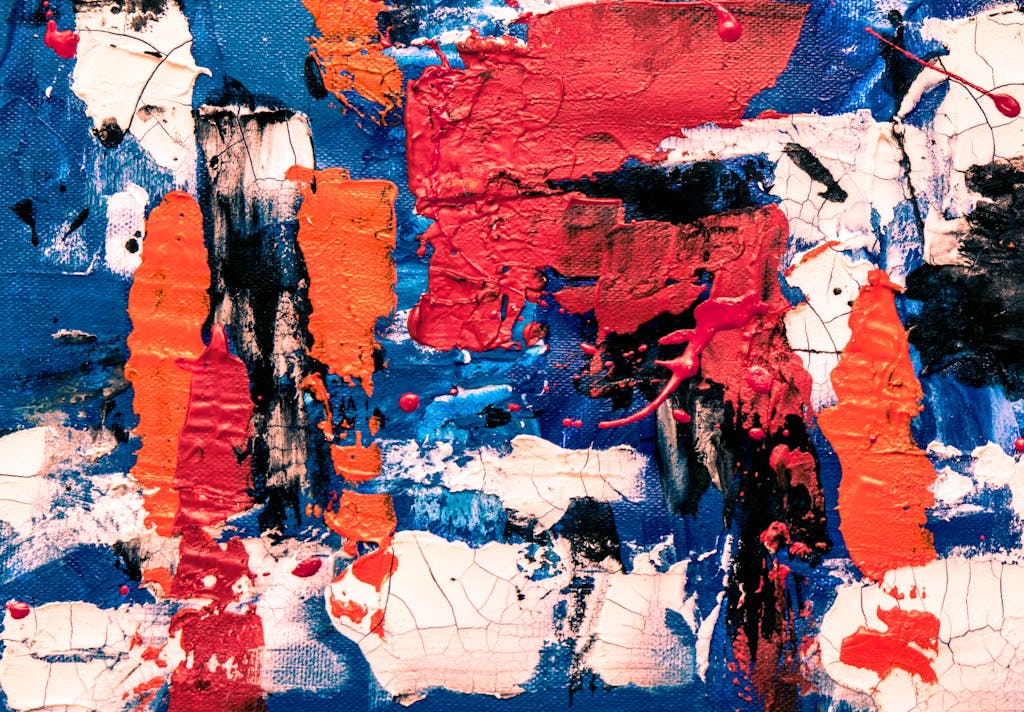
Color Range Comparison: Is More Always Better?
Do you really need 50 different colors of paint? Let me share some thoughts about color choices that might surprise you!
When I first started painting, I believed that having more colors led to better artwork. I’d be enamored by large sets of artist-grade paints with over 100 colors, thinking they offered endless choices. However, I soon realized that while these high-quality pigments mix beautifully and avoid muddiness, the quantity of colors isn’t what truly matters in creating great paintings.
But here’s something interesting: many professional artists use just a few colors! They pick 5-10 excellent paints and mix everything else they need. It’s like cooking – master chefs don’t need 100 spices to make fantastic food.
Student paints usually come in fewer colors. This is partly to keep prices down (more colors = more expensive). But it’s also to help beginners! Having too many choices can be overwhelming when you’re learning. Understanding color mixing is easier when you start with just the basics.
The big difference is that artist-grade primary colors (red, blue, yellow) are often made with just one pigment. This helps them mix together cleanly. Student-grade primaries might use several pigments mixed together, which can make your color mixing less predictable.
So what’s the best approach? It depends on you! If you’re starting out, a student-grade set with 10-12 well-chosen colors is perfect. As you get better, you should spend a little extra on one or two artist-grade colors you use all the time.
For example, investing in a pleasing blue might be worth it if you love painting oceans. Or if you paint lots of flowers, a unique rose or violet would make sense.
One tricky thing: the same color name might look different across brands. “Cadmium Red” from one company might not match another company’s version. If matching colors is essential, try to stick with one brand.
Remember, great artists throughout history created masterpieces with minimal color palettes. It’s not about having the most colors – it’s about knowing how to use the ones you have!
My advice? Start simple. Learn to mix colors well. Then, slowly add new colors as you discover what you really need. Your wallet will thank you, and your paintings might even get better!
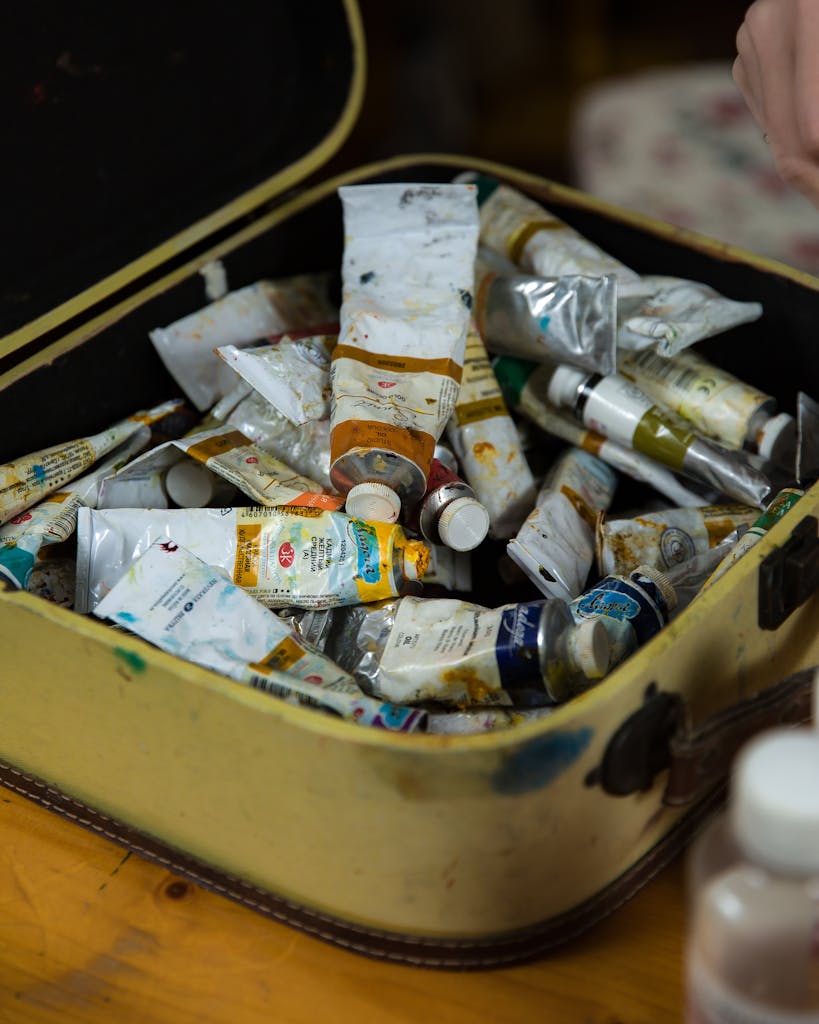
Longevity and Archival Qualities
I learned a hard lesson about paint quality painfully. Let me tell you what happened.
I painted a beautiful landscape a few years ago using cheap student paints. I was so proud that I hung it in my sunny living room. Big mistake! Within one year, the bright colors had faded to dull, sad versions of themselves. My masterpiece was ruined!
That’s when I learned about something important: how long paint lasts. Not all paint is the same when standing the test of time.
The biggest difference? How paints handle sunlight. Expensive artist paints have unique ingredients that protect colors from fading in light. Cheaper student paints don’t have this protection.
I once got to see some paintings from the 1960s. The ones made with suitable paints still looked fresh and bright. The ones made with cheap paints had turned yellowish and dull. What a difference!
Another problem with cheaper paints is that they sometimes don’t stick well to the canvas. I learned this when I painted a big wall mural with budget paints. After a few months, the paint started peeling off in places. Talk about embarrassing!
Weather can hurt paintings, too. Humidity, temperature, and air pollution changes can damage paint over time. Suitable paints handle these problems better than cheap ones.
So, what should you use? It depends on what you’re making. Student paints are fine if you’re practicing or trying new ideas. But spending more on suitable paints makes sense if you’re making something you want to keep for years or sell to someone.
Think about it like taking photos. For everyday snapshots, your phone camera works great. But for your wedding pictures or family portraits? You’d want a professional photographer with better equipment.
Knowing what your paint can and can’t do is the most important thing. Then, you can choose what to use for different projects. That way, your art will look good for many years to come!
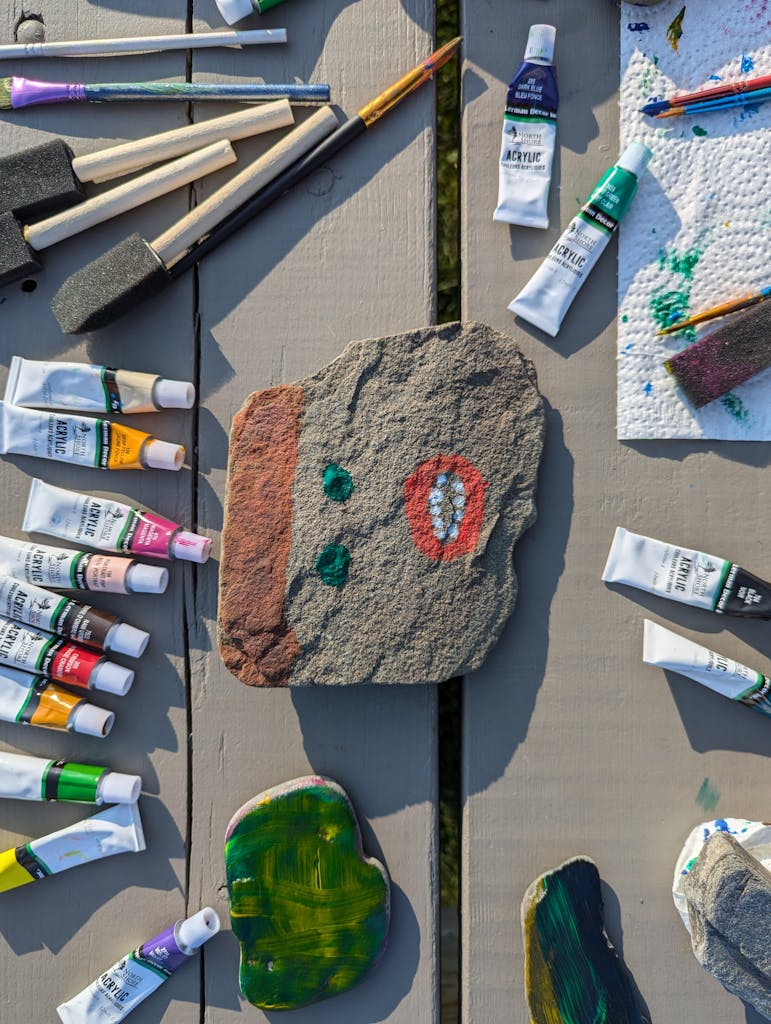
The Cost-Benefit Analysis
I remember the first time I saw how much reasonable paint costs. My jaw nearly hit the floor! As someone who’s been painting for many years, let me share what I’ve learned about paint prices and getting the most bang for your buck.
Let’s break it down. Artist-grade paints (the fancy ones) can cost 2 to 5 times more than student paints. A Golden Heavy Body paint tube might cost $15, while a similar-sized tube of Liquitex Basics might only cost $5.
You might wonder, “Why would anyone pay three times more for paint?” Good question! Here’s what I discovered after years of painting:
Suitable paints have more color in them. This means you use less paint to get bright colors. Think of it like juice concentrate versus watered-down juice. You need less of the strong stuff to get good flavor.
Better paints also last longer without fading. This matters a lot if you want your paintings to look good for many years.
But here’s my secret: you don’t need to buy any expensive paints! I use a mix of both. I always purchase artist-grade paints for my colors (like white, blue, and red). Then, I use student paints for colors I don’t use as much.
I spend about one-third of my paint money on the good stuff and the rest on cheaper paints and other supplies. This way, I get quality where it counts without breaking the bank.
Your approach might be different based on what you need:
– If you sell your art, you’ll probably want more good paint
– If you’re having fun, student paint works great
– If you’re learning, mix it up like I do
Remember this: the most important thing isn’t how much your paint costs – it’s that you keep painting! Whether you use fancy or budget-friendly paints, what matters most is the joy and creativity you bring to your art.
The best artists I know aren’t the ones with the most expensive supplies. They’re the ones who paint regularly and put their hearts into their work.
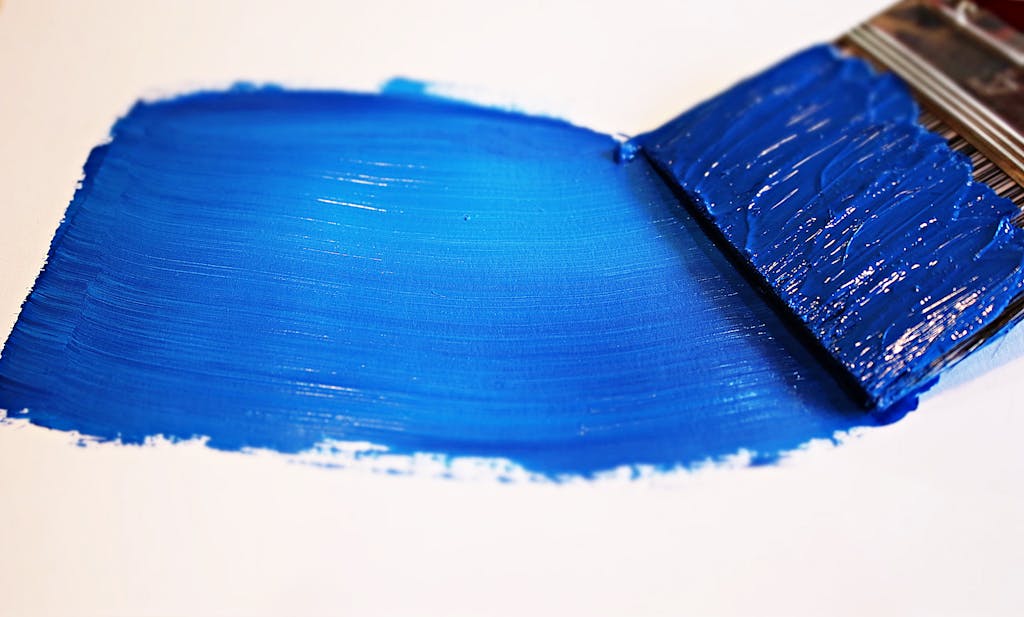
So, What Does This All Mean?
The choice between artist-grade and student-grade acrylics isn’t simply about budget—it’s about understanding your specific needs as an artist. In 2024, the line between premium and affordable options continues to blur, with some student-grade offerings approaching professional quality.
I’ve found that a strategic combination of both grades often yields the best results! Consider investing in artist-grade for your most-used colors and finishing layers, while student-grade options work perfectly for underpainting and learning techniques. Even master artists occasionally reach for student-grade paints when the application calls for them. Ultimately, your artistic voice matters more than the price tag on your supplies—choose the tools that best help you express your vision!
By Antonio Limongi MA EdS
Limongi, Owner of Antonio Limongi Fine Art LLC, is a Master Painter, Portrait Artist, and Art Instructor with 20 years of experience. He reports on issues in Fine Art Education, Creating Art, Investing in Art, and Selling Fine Art. (Some Links are Affiliate Partners)


